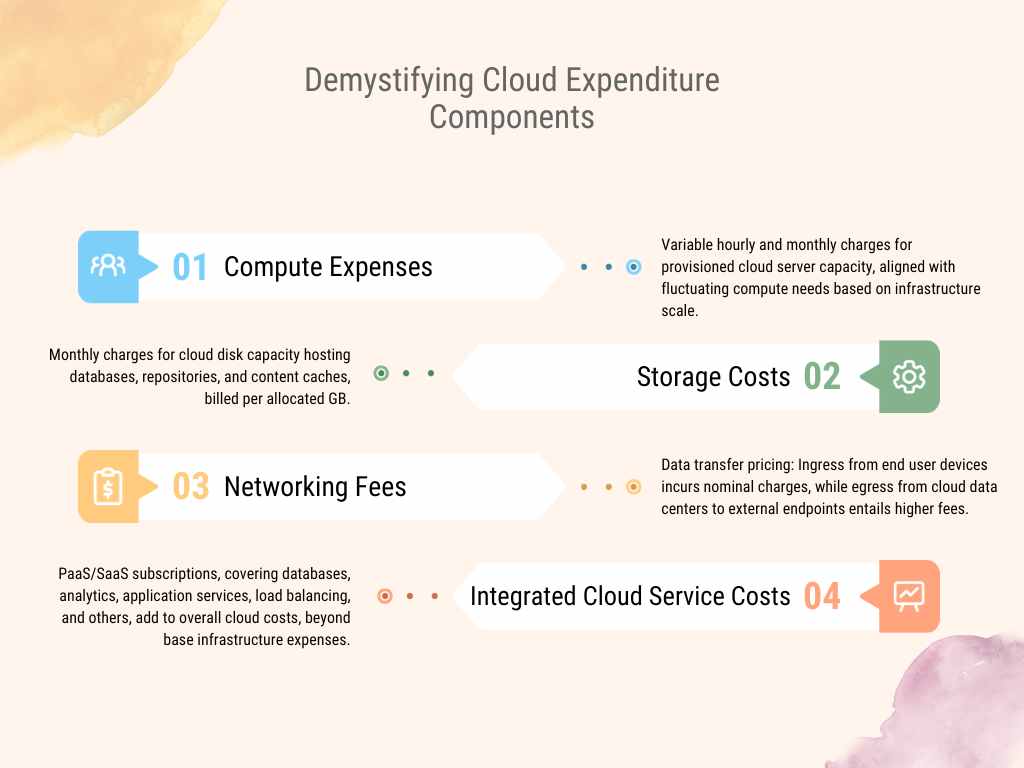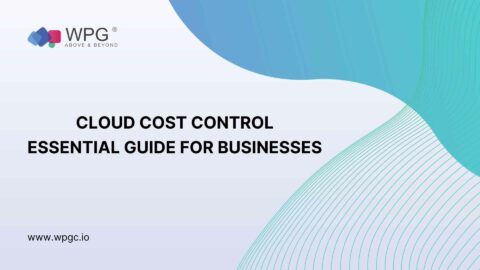Migrating systems to the cloud can provide undeniable advantages around flexibility and scalability. But without careful governance and oversight, cloud expenses can quickly spiral out of control. Surveys show nearly 50% of cloud adopters found costs exceeded initial budgets.
This comprehensive guide serves as an actionable framework for organizations to:
- Better understand complex cloud pricing models
- Implement visibility controls monitoring expenditures
- Right-size usage to balance performance needs and budgets
- Choose instance types strategically to minimize spending
- Automate shutdown of non-production environments
- Deprovision unused resources to stop excess charges
Following this continuous cost optimization blueprint helps technology leaders maximize cloud value while gaining control over total expenditures.
Table of Contents
Demystifying Cloud Expenditure Components

The first step toward optimizing budgets is fully breaking down what comprises total cloud costs:
Compute Expenses
Ongoing hourly and monthly charges for provisioned cloud server capacity supporting workload processing/usage needs. Compute spend fluctuates corresponding to infrastructure scale.
Storage Costs
Usage charges for cloud disk capacity holding databases, repositories, content caches and any other structured/unstructured data. Typically billed per allocated GB monthly.
Networking Fees
Data transfer pricing levied on inbound data (ingress) from end user devices and more substantially for outbound data (egress) from cloud data centers to external connection endpoints.
Integrated Cloud Service Costs
Any PaaS/SaaS subscriptions like databases, analytics, application services, load balancing and more contribute to overall cloud expenditures on top of base infrastructure expenses.
With cloud computing, actual consumption rather than fixed on-premise equipment capacity determines costs. This supports elasticity but allows expenses to unintentionally balloon without oversight.
Constructing an Optimization Strategy
The most effective cost optimization initiatives tightly align to well-defined business objectives for cloud adoption including:
- Accelerating innovation
- Building deeper data insights
- Achieving IT infrastructure resilience
This guides cost governance in balance rather than arbitrarily restricting legitimate initiatives.
Right-Size Workloads
Mission-critical cloud production workloads should be sized deliberately to comfortably meet typical demand rather than over-provisioning to the highest theoretical capacity needed. Auto-scaling dynamically adjusts to handle traffic spikes as needed on live systems.
Employ Reservations Where Possible
Leverage reserved VM instance purchases aligned to steady-state, predictable base compute needs in balance with maintaining dynamic capacity for variable applications. This can lower standard hourly instance costs considerably over time.
Enforcing Oversight and Visibility
Once optimized cloud architectures are established, continuous expense oversight, alerts, user allocation tracking and anomaly detection all help curb budget overruns:
Build a Centralized FinOps Team
Assemble a cross-functional financial cloud management team combining leadership, cloud architects, application owners and finance personnel to coordinate and guide optimization tradeoffs across business units.
Mandate Resource Tagging
Require consistent cloud resource tags across departments describing workload uses, owners and cost centers to permit allocating shared cloud infrastructure/service expenses accordingly. This also enables full cost reporting, forecasting and chargebacks.
Configure Notification Alerts
Implement billing alerts to proactively trigger warnings directing attention to escalations in consumption and cash flow outlays before significant budget overruns materialize.
Optimizing Infrastructure Usage and Scale
Similar to smart household energy conservation reductions, shutting down or right-sizing extra capacity saves substantially:
Identify and Decommission Idle Resources
Audit non-production cloud environments for inactive test/transient resources that are not set to automatically terminate. Schedule deprovisioning to stop racking up unnecessary charges.
Keep Resource Volumes Tightly Aligned to Needs
Continually reassess VM performance, storage consumption and memory demands to minimize resource footprints without creating pressure points that could degrade end user experiences or workload stability. Any overcapacity should be downscaled.
Shut Down Non-Production Services
Unless necessary for intermittent after-hours tasks, shut down development, test, staging and QA resources during periods of inactivity to limit runtime expenses.
Using Pricing Models Strategically
In balance with foundational footprint reductions, take advantage of public cloud discounted models for targeted workloads:
Adopt Spot/Preemptible Instances
Leverage discounted short-notice surplus capacity instances with the tradeoff of abrupt termination for experimental workloads, temporary overflow capacity or batch data operations to reduce associated compute charges by 60% or more.
Commit to Savings Plans
Lock in consistent usage discount rates via 1-3 year plans for committed production cloud spends once stabilization is achieved. This earns increased savings over month-to-month payments aligned to steady-state needs.
Conclusion
Without deliberate planning, oversight and relentless dedication toward usage optimization, businesses risk runaway cloud costs even outweighing hoped-for savings over legacy infrastructure. This guide presented a practical framework any cloud adopter can follow spanning visibility, governance and financial best practices to tightly control expenses while realizing cloud’s potential.
FAQs
Migrating to public cloud can drive net savings but ONLY with disciplined optimization and spending governance afterward. Make platform decisions based on total cost of ownership and rigorously apply FinOps practices post-adoption.
Reassess production right-sizing at least quarterly, while monitoring usage spikes actively. Evaluate storage optimization and data archival monthly. Focus groups into habits not afterthoughts.
Cloud cost management tools like CloudCheckr, CloudHealth and Cloudability aggregate expenses enterprise-wide delivering visibility into waste and accountability across business/application owners. This enables efficient allocation.

